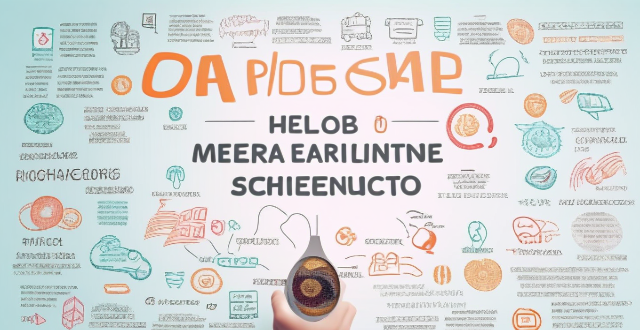The text discusses the role of social media in climate science communication. It highlights three main ways in which social media influences this field: awareness and education, engaging with the public, and promoting action and advocacy. The author provides examples for each category, such as sharing infographics and videos on platforms like Facebook or Twitter to educate people about climate change, conducting polls and surveys to gather feedback from the public, and initiating challenges or campaigns to encourage sustainable practices. The text concludes by emphasizing the importance of leveraging social media to spread accurate information, foster dialogue, and inspire collective action towards mitigating the effects of climate change.

The Role of Social Media in Climate Science Communication
Social media has become an integral part of our daily lives, and it plays a significant role in the communication of climate science. It is a powerful tool that can be used to spread awareness about climate change, engage with the public, and promote action towards mitigating its effects. In this answer, we will discuss the various ways in which social media influences the communication of climate science.
Awareness and Education
One of the most important roles of social media in climate science communication is raising awareness and educating people about climate change. Through platforms like Facebook, Twitter, Instagram, and YouTube, scientists and experts can share their research findings, explain complex concepts in simple terms, and provide updates on the latest developments in the field. This helps to reach a wider audience and create a better understanding of the issue among the general public.
Examples:
- Infographics: Visual representations of data and statistics related to climate change can be shared on social media platforms to make them more accessible and engaging.
- Videos: Short videos explaining climate science concepts or showcasing the impacts of climate change can be uploaded on platforms like YouTube or Vimeo.
- Live Q&A sessions: Scientists can host live question-and-answer sessions on social media platforms to interact with the public and address their concerns and queries.
Engaging with the Public
Social media provides an opportunity for scientists and researchers to engage with the public directly. They can use social media platforms to listen to people's opinions, answer their questions, and address their concerns about climate change. This two-way communication helps to build trust and credibility among the public and encourages them to take action towards mitigating the effects of climate change.
Examples:
- Polls and Surveys: Scientists can conduct polls and surveys on social media platforms to gather feedback from the public and understand their perspectives on climate change.
- Crowdsourcing: Social media can be used to crowdsource ideas and solutions from the public for addressing climate change challenges.
- Collaborative Projects: Scientists can collaborate with the public on social media platforms to work together on climate-related projects and initiatives.
Promoting Action and Advocacy
Social media can also be used as a platform for promoting action and advocacy towards mitigating the effects of climate change. By sharing success stories, highlighting best practices, and encouraging others to join the cause, social media can help create a sense of urgency and motivate people to take action.
Examples:
- Challenges and Campaigns: Scientists can initiate challenges or campaigns on social media platforms to encourage people to adopt sustainable practices or support climate-friendly policies.
- Partnerships: Collaborating with influencers, celebrities, or organizations that have a large following on social media can help amplify the message and reach a broader audience.
- Sharing Personal Stories: Sharing personal stories of how individuals or communities are being affected by climate change can help create empathy and drive action among the public.
In conclusion, social media plays a crucial role in the communication of climate science by raising awareness, engaging with the public, and promoting action towards mitigating its effects. As we continue to face the challenges posed by climate change, it is essential that we leverage the power of social media to spread accurate information, foster dialogue, and inspire collective action.